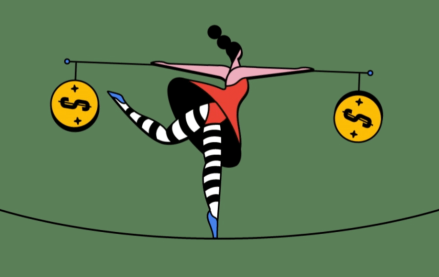Join us Dec. 1-3 in New Orleans for the Digiday Programmatic Marketing Summit

This native ad that The New York Times created for Netflix’s Orange is the New Black is getting praise from, of all people, journalists.
The multimedia campaign centers on women in prison, the setting for the original series. It’s one of the first to come from the Times’ newly formed Brand Studio unit, which was built to create native ads for advertisers. The article was written by Melanie Deziel, an editor at the studio who worked in the past at The Huffington Post and BuzzFeed. The illustrations are by Otto Steininger, whose work has appeared on the cover of The New Yorker.
The package includes audio clips, a slideshow and graphics. The rich presentation has some resemblance to a native ad Netflix ran in Wired last month that focused on how TV-watching is changing.
Orange is the New Black’s popularity is helping the ad get attention right off the bat, but what’s interesting is the praise it’s getting from people who aren’t your typical native ad boosters, including some from the Times’ editorial side.
Snow Fall for native ads? MT @sjwilliams This paid post on NYT is impressively produced https://t.co/zxXTuL2u1k
— Erik Hayden (@Erik_Hayden) June 13, 2014
Can’t believe I’m sharing a paid post, but interesting work in the Times. Even mobile-friendly https://t.co/huKSLScQXl. (via @joshsternberg ) — hamman (@hamman) June 13, 2014
All brand-sponsored journalism does not suck. Witness this peach by @mdeziel on women in prison. From Netflix, natch. https://t.co/Jljr6MvzpP — david carr (@carr2n) June 13, 2014
The New York Times just published what is probably the best piece of sponsored content you will find. https://t.co/uomKqGdVAY — Sam Petulla (@spetulla) June 13, 2014
Netflix have done an OITNB sponsored post in the @nytimes & it is the model of what all ‘sponsored posts’ should be: https://t.co/utS8mOCGhU — Tom Hoare (@HoareTom) June 13, 2014
The ad is the first to follow a change in the Times’ native ad policy. Until a few days ago, the Times has avoided posting its native ads to its social channels as other publishers do. But the Times has since created a Twitter account for its brand studio, which it’s now using to promote paid posts.
Such an approach may prevent readers from confusing native ad tweets from editorial tweets, but it doesn’t give the ad much promotional firepower, given the Times’ @TBrandStudio had only 74 followers as of June 13.
(The debut ad is, however, getting promotional help from the likes of Piper Kerman, the author whose book the show was based on, who tweeted the link to her 52,000 followers.)
Watched @OITNB Season 2? Now watch real women talk abt their incarceration via @nytimes & @netflix https://t.co/ogd27lEuNJ #CJreform
— Piper Kerman (@Piper) June 13, 2014
The ad works because it associates Netflix with a broad topic in a high-quality presentation, said Steve Rubel, chief content strategist at Edelman.
“Instead of, ‘Watch my show and here’s why it’s great,’ it gets you into a bigger narrative that a Times reader might want to know more about,” he said.
The article acts like real journalism in that it takes a subject people are interested in and gives them a way to explore it further, said Pat Aufderheide, a communications professor at American University. “In this case, I see journalistic value,” she said.
The premise of native advertising is that it uses the techniques of journalism, distributed in the editorial stream, to get the attention of ad-weary readers (or, to critics, deceive them). If the goal is to get the same attention that editorial does, most native ads miss the mark, though.
The Times ad will raise the bar for native advertising, Rubel said. But it may be tough for other advertisers to replicate when they don’t have the content and narrative that companies like Netflix already have.
“Entertainment is a very good fit because it has a good narrative already,” Rubel said. “They did half the work already.”
More in Media

Forbes launches dynamic AI paywall as it ramps up post-search commercial diversification plans
For the latest Inside the publisher C-Suite series, Digiday spoke to Forbes CEO Sherry Phillips on its AI-era playbook, starting with its AI-powered dynamic paywall to new creator-led commercial opportunities.

Creators embrace Beehiiv’s push beyond newsletters
Creators are embracing Beehiiv’s new website, product and analytics tools to help them grow beyond the competitive newsletter space.

Media Briefing: Publishers turn to paid audience acquisition tactics to tackle traffic losses
Publishers facing declining organic traffic are buying audiences through paid ads and traffic arbitrage, and using AI tools to do it.





